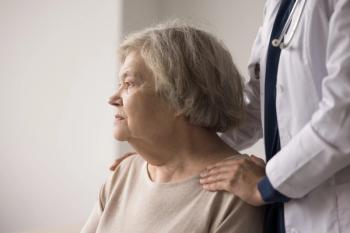
A Tale of Two Crises: Fighting the Overdose Problem During the Pandemic
According to Nora D. Volkow, MD, Director of the National Institute on Drug Abuse, drug use and overdose deaths have significantly increased since the outset of the pandemic. What made it worse?
CONFERENCE REPORTER
“The current opioid crisis has been responsible for the largest increase in deaths associate with opioids that we have ever known,” said Nora D. Volkow, MD, at the 2021 Virtual American Psychiatric Association Annual Meeting.
Volkow, Director of the National Institute on Drug Abuse (NIDA) at the National Institutes of Health, discussed how the pandemic has exacerbated the opioid crisis in the session, “
In March 2020 during the outset of the pandemic, the number of people reporting drug use rose significantly.1 The top 4 drugs were nonprescribed fentanyl, cocaine, heroin, and methamphetamine. Overdoses increased up to 42% per month during the pandemic.2 If an individual had SUD and were infected with SARS-CoV-2, the likelihood of dying increased, especially for black men.3
As the amount of drug use increased, so did the problems. The pandemic presented a number of key challenges for individuals with substance use disorder (SUD), Volkow noted, including: stigma, isolation, and loss of work/homes. These challenges prevented individuals with SUD from getting proper care, or worsened their condition. Volkow gave an overview of these issues and their impacts.
Stigma
“We know that people with opioid use disorder… are terribly stigmatized,” Volkow stated. “It’s very hard sometimes to convince people with an opioid use disorder to go to a hospital because they don’t like to be discriminated against or mistreated.”
Stigma and the belief they will not receive thoughtful care already kept some individuals with SUD from checking into a hospital; the pandemic worsened this likelihood. Both hospitals and prisons became hotbeds for the SARS-CoV-2 virus, places often with higher concentrations of individuals with SUD.
Isolation
“In order to reverse an overdose, someone has to give them naloxone,” Volkow said. “But if you are isolated, and start shooting by yourself, the likelihood of getting naloxone is much less likely.”
According to Volkow, reports from the community suggest an increased number of overdose deaths in homes where the individual was alone.
Loss of Work/Homes
“Economic challenges are some of the stress source that leads people to take more drugs to try to cope,” Volkow relayed.
Homelessness was also associated with an increased likelihood of contracting the SARS-CoV-2 virus, due to social distancing problems.
Solutions
Volkow wants to increase research on topics like telemedicine and changes in the justice system, and how they can be furthered post-pandemic. Expanding access to treatment of comorbid conditions via telemedicine, and releasing nonviolent inmates with SUD, are just a few ideas she has.
Volkow posed the following question for the audience to ponder: “What is the structure we need to provide for these individuals to be successful in adjusting to their community and not be at risk for relapse?”
References
1. Millennium Health. Signals report COVID-19 special edition. July 8, 2020.
2. Overdose Detection Mapping Application Program.
3. Wang QQ, Kaelber DC, Xu R, Volkow ND. COVID-19 risk and outcomes in patients with substance use disorders: analyses from electronic health records in the United States. Mol Psychiatry. 2021;26:30-29.
Newsletter
Receive trusted psychiatric news, expert analysis, and clinical insights — subscribe today to support your practice and your patients.

















